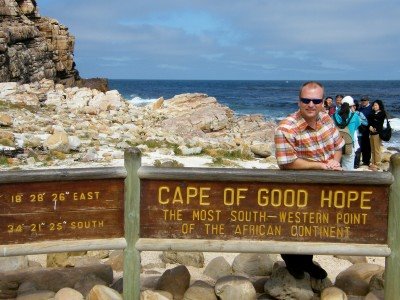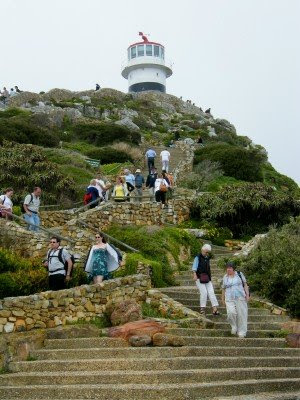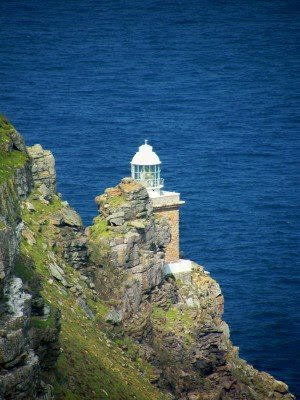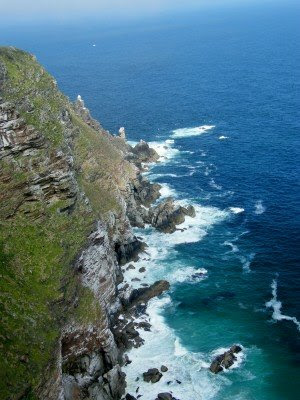The first one is The Cape of Good Hope, the most South-Western point of the African continent. Just over 2km away is the second, and more spectacular point, Cape Point. Both the Cape of Good Hope and Cape Point offer spectacular scenery. Indeed, the whole of the southernmost portion of the Cape Peninsula is a wild, rugged, scenic and generally unspoiled national park.
The area was called the Cape of Storms by the Portuguese and later renamed The Cape of Good Hope. The name also referred to the new beginning that many people from Europe came to make at the southern tip of Africa during the 1600 and 1700’s.

The sign at the Cape of Good Hope is a very popular tourist attraction and people line up on both sides to dash in for that obligatory picture. So who am I to argue.
 From the Cape Point car park a funicular railway takes visitors up (or you can walk up) to the old lighthouse on the highest point overlooking the sea. The old lighthouse was replaced by a new one because it was at a height where it was ofter shrouded in fog and clouds. Due to this problem many ships was wrecked along this point. The best known one was the Lusitania which ran aground on Bellows Rock in 1911. The view from the top is awesome with towering cliffs falling away more than a hundred meters.
From the Cape Point car park a funicular railway takes visitors up (or you can walk up) to the old lighthouse on the highest point overlooking the sea. The old lighthouse was replaced by a new one because it was at a height where it was ofter shrouded in fog and clouds. Due to this problem many ships was wrecked along this point. The best known one was the Lusitania which ran aground on Bellows Rock in 1911. The view from the top is awesome with towering cliffs falling away more than a hundred meters.

The new lighthouse is at sea level and is the most powerful on the South African coast, with a range of 63 kilometres (39 mi) and an intensity of 10 mega candelas in each flash. It can be reached via a pathway that leads down to the point.

The Cape of Good Hope and Cape Point is also the location of the legend of the Flying Dutchman. The Flying Dutchman, according to folklore, is a ghost ship that can never go home, and is doomed to sail the oceans forever.

The 3rd shot is an absolute stunner. Enlarge it, frame it, hang it!
This comment has been removed by the author.
Wow! Cape Town is beautiful.I LOVE the Hairy worm!